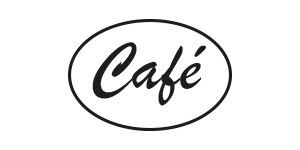How to avoid ending up with a bag of spanners!
Selecting, implementing and operationalising EA Tooling can be daunting but come on, Architects advise businesses on how to implement change so how hard can it be? 😊 We can all see the benefits of having great data on the business, information and technology components of an “enterprise” but getting investment, buy-in and disciplined execution is tricky
Top Ten Tips:
- Set a vision for the tool: It sounds obvious but getting something up front, focused on the value you can deliver to your key stakeholders will aid the whole process. Start with outcomes you know you can sell and prioritise them.
- Find out what the market has to offer: Once you know what you want to do, run an RFI before jumping to RFP. This doesn’t have to be a verbose, long winded exercise, just get the market to tell you what’s possible by asking vendors to point you to their key unique buying/selling points. On the back of this, create a wish list prioritised against what you need to deliver your vision/value/outcomes.
- Start small, grow big: If push comes to shove, select a tool that fits your immediate needs and delivers your priority outcomes. Yes, you risk outgrowing the tool but chances are you’ll burn a lot less time and money and be much more informed about what you do need.
- Run a PoC: Short, sharp proof of concept exercises will help you understand what you’ll need to do when you do it for real. They also provide an opportunity to inform your vision and the business case.
- Eat you own dogfood: Set aside budget to run a proper project. You need a PM to drive it and build in as much time/budget as you can for populating the data
- Don’t underestimate the effort involved in populating the tool with your data. If you have the budget get it done professionally. If not, make it somebody’s raison d’etre. Your Architects and business stakeholders already have too much on their plates, the last thing they all need is another responsibility. Remember, your data WILL be wrong to some extent, the way to get it in the best shape possible is to use the tool 😊
- Don’t be tempted to run your manual processes alongside the tool: The quicker you adopt the tooling the closer you get to realising the benefits. Use the tool to master your data asap.
- Don’t expect your business stakeholders to take responsibility for their data: Give them what you think first, if it’s wrong they will tell you, if not Hussar!!
- Forget creating the world’s best Meta Model. Believe me, don’t waste time creating something that’s perfect for you because things will change and you really don’t want that change management responsibility. Start with what the tooling gives you out of the box, tweak it if you need to but only ever consider writing something yourself if you have the budget to do it and capability to support it.
- Don’t underestimate the admin overhead: Success comes from good administration. Make sure you have a plan for how this is done. You don’t necessarily need a dedicated resource (it does massively help though) just putting together a simple task list and RACI will reduce admin headaches.
- Forget about perfection, it doesn’t exist. If your data is 80% accurate you are doing very well
Yes, I know that’s 11 😂😂
If you need any help, Café have the independent knowledge and experience you need to be successful! We’re tool agnostic but have relationships with all the major vendors.
mark.mccomish@cafeassociates.co.uk www.linkedin.com/in/mark-mccomish-CafeAssociates

